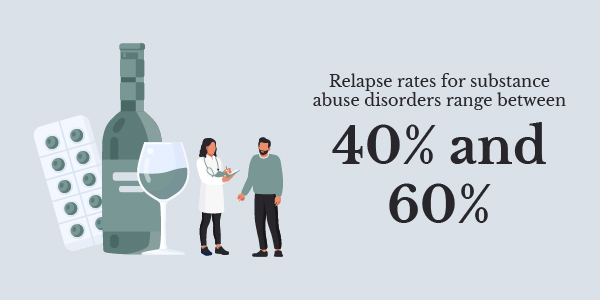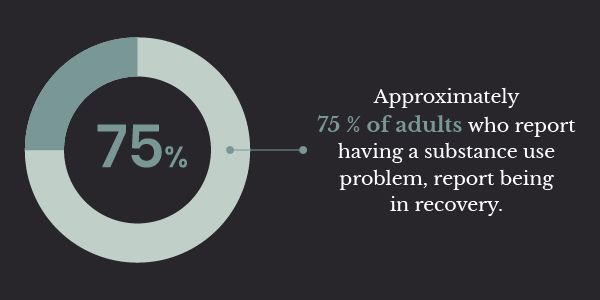What is Drug Detoxification?
Learn more about what drug detoxification is, what symptoms and side effects you can expect from detox and withdrawal, and how to best navigate the process.
What is drug Detoxification?
Drug detoxification is the process of allowing a substance to leave your system after you have developed a physical dependence on it. One of the criteria for addiction in the DSM-5 involves tolerance and dependence. This means that your body becomes accustomed to the substance, often requiring an increased amount to achieve the desired effect. In order to no longer be dependent upon the drug, the body must go through the drug detoxification process.
There are two widely known methods to detox from a drug: cold turkey and tapering. It’s worth noting that with some substances, abruptly stopping can be extremely dangerous and therefore requires drug withdrawal treatment.

Contact Profound Treatment to Learn More
Our team is standing by to discuss treatment options with you. Your call is completely confidential and no obligation is required.
Cold Turkey
In terms of substance use and detox, cold turkey simply means stopping and abstaining use of a substance immediately and completely. Typically, quitting cold turkey will result in severe drug withdrawal symptoms that can be extremely uncomfortable and, at times, dangerous. However, depending on the type of substance and with the right support, a cold turkey drug detox can be effective.1
Tapering
Tapering often involves either slowly lowering the dose of a drug or the use of medications to alleviate drug withdrawal. For example, many outpatient opioid detoxification and inpatient opioid detoxification programs will use a combination of medications to help someone taper off of opioids. These medications may include anti-anxiety medications like benzodiazepines, anti-nausea medication, and/or medication-assisted treatments (MAT) like suboxone to minimize withdrawal symptoms.
Why Inpatient Drug Detox?
An inpatient or residential detoxification program can be important for addicted individuals in order to safely manage withdrawal symptoms and work toward sustainable recovery. Many people continue to use or return to using in order to avoid the discomfort associated with detoxing from their substance of choice.
Despite the detox process being uncomfortable, drug detoxification is essential for both physical and mental health. Since drugs and alcohol can have an extremely negative impact on both physical and mental health, allowing the body to detox from substances it has become dependent on is crucial to finding stability to begin the journey toward a sober way of life.
Understanding Withdrawal Symptoms and Timelines
Drug detox and withdrawal timelines depend on the type of drug taken. Drug and alcohol detox times can vary for many reasons, including the substance, the dose and duration it has been used, and the person’s age, weight, metabolism, and/or overall health. More detailed information about how detox timelines and processes may differ by substance is described below.
Opioids
For short-acting opioids such as heroin, an individual may start to experience drug detox symptoms as soon as a few hours after their last use. Typically, withdrawal symptoms peak around forty-eight to seventy-two hours and may continue for five to ten days. For more long-acting opioids, such as Methadone, the onset of the opioid detoxification symptoms often start around forty-eight hours after last use, peak around day three, and may take up to twenty-one days to resolve.2
Understanding Opioid Withdrawal
Alcohol
For alcohol withdrawal, minor withdrawal symptoms such as tremors, sweats, and anxiety will often start between five and ten hours after the last drink. Within twelve to twenty-four hours, symptoms of delirium tremens may start to occur. These symptoms often include hallucinations and can last up to two days.
Between twenty-four and forty-eight hours, alcohol withdrawal seizures may occur if not properly medicated and monitored. These can be extremely dangerous and fatal. After seventy-two hours, alcohol withdrawal symptoms tend to improve and may continue for up to five days.3
Stimulants
With stimulants such as cocaine and methamphetamine, the drug detoxification symptoms of agitation or anxiety may occur immediately after the person stops taking the drug. Around twelve hours after the last use, the initial “crash” phase typically occurs. After this introductory period, signs of stimulant withdrawal can continue to occur between ninety-six hours to several weeks.
Sedatives
Sedatives, often called benzodiazepines or “benzos,” have a withdrawal timeline that usually starts twenty-four hours after the last use. Acute drug withdrawal generally begins within a few days after the initial withdrawal period. From there, people may continue to experience withdrawal symptoms that last between five to twenty-eight days. Though in some instances, symptoms may last for several months.4
Post-Acute Withdrawal Syndrome (PAWS)
What Is the Process for Drug Detox?
Drug Detox Symptoms And Side Effects

Alcohol Detox Symptoms
- Gastrointestinal upset, such as nausea, vomiting, and/or diarrhea
- Insomnia
- Excessive sweating
- Increased pulse
- Increased blood pressure
- Tremors, especially in the hands
- Hallucinations
- Seizures
- Confusion
- Delirium tremens, which involves sudden and severe changes in the nervous system
Opioid Detox Symptoms
- Muscle aches and pain
- Goosebumps
- Fever
- Excessive sweating
- Gastrointestinal upset, such as nausea, vomiting, and diarrhea
- Watery eyes and runny nose
- Irritability
- Anxiety
- Depressed mood
- Sleep problems, such as insomnia
- Excessive yawning
Sedative Detox Symptoms
- Increased anxiety or panic attacks
- Insomnia
- Repetitive movements, such as pacing
- Nausea and vomiting
- Increased pulse rate
- Excessive sweating
- Tremors
- Hallucinations
- Seizures
Stimulant Detox Symptoms
Stimulant drugs include methamphetamine, cocaine, and amphetamines like Ritalin and Adderall. The withdrawal symptoms from stimulants may include:
- Increased fatigue
- Insomnia or hypersomnia
- Nightmares
- Depression
- Suicidal thoughts or behaviors
- Increased anxiety
- Increased appetite
- Slowed movements or thoughts
- Lethargy
- Anhedonia
Drug Detox Stages

The “Crash”
Withdrawal
Extinction
Can I Detox Myself?
Home Detox Risks
Managing Detox Symptoms at Home

- Stay hydrated: Many detox symptoms include dehydration, which can result in increased feelings of fatigue, headaches, dizziness, muscle pains, and nausea. Water can help flush out your system and decrease the severity of some of the symptoms.
- Get proper nutrients: People sometimes do not eat properly while they are using. This often results in the body lacking the necessary vitamins and nutrients it needs to function properly. If you are detoxing at home, try to eat healthy meals with nutrient-filled foods, as well as take vitamins such as vitamin D, vitamin B, calcium, and magnesium.
- Engage in physical activity: Physical activity not only has the benefit of increasing mood, but sweating helps to eliminate toxins from the body. This can be difficult when feeling uncomfortable or ill during withdrawal but can help improve symptoms.
Drug Detoxification Risk Factors
- Overdose: When detoxing from a substance, you are at a higher risk of overdosing if you start using again due to your body no longer being tolerant to the amount used prior to the detox. Therefore, in cases of relapse, returning to using the same amount or dosage can result in an overdose.
- Drug detox during pregnancy: Unsupervised detox may place the mother and child at risk, but medical detox can be done safely for both the mother and child.
- Rapid and ultra-rapid detox: Rapid detox involves giving medication to speed up the onset of detox and then administering medications to help treat the withdrawal. Ultra-rapid detox involves being placed under anesthesia and being administered naloxone to quickly flush opiates from the brain’s receptors. The risks for rapid and ultra-rapid detoxes include respiratory distress, rapid breathing, acute renal failure, delirium, or death.
Drug Detox Treatment
Drug Rehabilitation
Inpatient or Residential Treatment
Inpatient, or residential treatment, requires individuals to reside in a facility and receive care twenty-four hours a day. An inpatient detoxification program offers round-the-clock medical support, medication, and engagement in therapy.7
In both inpatient detox and residential treatment programs, individuals will be provided with support, individual therapy, group therapy, and family therapy, as well as access to a medical provider for possible medication if needed. Completing a more long-term residential treatment program may be associated with reduced relapse rates as opposed to short detox or outpatient programs.
Inpatient vs. Residential Treatment
There is a difference between inpatient detoxification programs and residential programs. Commonly with inpatient drug detox, an individual completes the detox and then moves into a longer residential program in order to continue treatment and therapy. With a detoxification program, the goal is managing and alleviating withdrawal symptoms with the use of medical support and medication. These programs can last anywhere from three to ten days, depending on the length and severity of the drug detox symptoms.
Outpatient Treatment
Additional Outpatient Options
- Intensive outpatient programs (IOP): IOPs involve attending treatment three to five days a week for a total of around nine hours per week. The treatment may include individual therapy, group therapy, family therapy, and/or medication management.
- Partial hospitalization programs (PHP): These are more intensive than IOPs and involve attending treatment four to five days a week for a total of twenty hours per week. Most PHPs include individual therapy, group therapy, family therapy, and medication management as requirements for the program.8
Medication-Assisted Treatment (MAT)
- Alcohol: Acamprosate, disulfiram, and naltrexone are the most common medications used to treat an alcohol use disorder. These medications do not provide a “cure” for the disorder, but are shown to be effective in reducing cravings and improving engagement in treatment programs.
- Opioids: Buprenorphine, methadone, and naltrexone. Buprenorphine is commonly known as Subutex and the combination of buprenorphine and naltrexone is commonly known as Suboxone. As with alcohol, these medications do not provide a cure for opioid use disorder, but help to reduce cravings and are used to block the “high” effect that most people seek when using opioids.
Behavioral Therapies
- Cognitive Behavior Therapy: Cognitive behavior therapy involves helping individuals identify and change negative beliefs that may be contributing to maladaptive thoughts, feelings, and behaviors. Cognitive behavior therapy also teaches positive coping skills to use in place of substance use.
- Contingency Management: Contingency management involves reinforcing positive behavior changes using rewards. This can involve using monetary-based rewards for meeting positive goals, such as continuing to test negative.
- Family and Couples Therapy: Family and couples therapy are used in treatment in order to help repair and build interpersonal relationships that are often damaged during active substance use.
What to Expect From Therapy
Detoxification Program at Profound Treatment
Seeking treatment for alcohol and substance abuse or addiction can prove to be a daunting task. If you or someone you know is struggling with addiction and is ready to begin the path to sobriety, Profound Treatment is here to help.

Life After Detoxification
Why Choose Us
For more information about Profound’s program, contact us 24/7 by phone at 310.929.9546, email us at [email protected], or reach us via our website at https://profoundtreatment.com/contact-us/.
Resources
- https://www.medicalnewstoday.com/articles/is-it-bad-to-quit-cold-turkey#benefits
- https://withdrawal.net/by-drug-type/how-long-does-withdrawal-last/
- https://www.webmd.com/connect-to-care/addiction-treatment-recovery/alcohol/alcohol-withdrawal-symptoms-timeline
- https://www.medicalnewstoday.com/articles/benzo-withdrawal#acute-withdrawal
- https://pubmed.ncbi.nlm.nih.gov/36731102/
- https://nida.nih.gov/publications/drugfacts/treatment-approaches-drug-addiction
- https://www.goodtherapy.org/learn-about-therapy/modes/residential-treatment
- https://www.medicalnewstoday.com/articles/intensive-outpatient-therapy
- https://www.samhsa.gov/medication-assisted-treatment
- https://www.ncbi.nlm.nih.gov/pmc/articles/PMC3633201/







